A Step-by-Step Guide: How To Clean Your Camera Lens
As a photographer, you may have experienced the frustration of capturing a once-in-a-lifetime shot, only to realize later that it's marred by blurry spots or smudges on your lens.
Perhaps you were shooting in a dusty environment or accidentally touched the glass with your fingers. Whatever the cause, a dirty lens can ruin even the best photo opportunities.
But fear not! In this article, we'll show you the step-by-step process for how to clean a camera lens like a pro, so you can keep capturing clear, beautiful images every time.

In this article, you will learn:
- Why You Need to Clean and Maintain Your Camera Lens?
- A Step-By-Step Guide to Performing a Dirt Test on a Camera Lens
- How To Clean Camera Lens?
- Frequently Asked Questions About Cleaning Camera Lens
Why You Need to Clean and Maintain Your Camera Lens?
Your camera lens is among the most cherished pieces of equipment in your photography arsenal. The most critical and delicate part of the camera is the lens that we can see directly, the one that's exposed directly to the environment.
Modern camera lenses employ coating technologies to substantially improve image quality. The high-tech coatings on this camera lens are nano-sized, making them quite delicate. If they are damaged, it can lead to a decline in image quality.
Before you learn how to maintain your camera lens on a day-to-day basis, it's essential to understand that every physical cleaning is a normal wear and tear on the lens. It doesn't impact the lens's lifespan. However, cleaning it incorrectly can cause serious damage!
Therefore, it's crucial to learn the right cleaning methods and use the correct cleaning tools.
In routine maintenance, our primary goal should be to prevent the lens from getting dirty in the first place. This preventative approach, coupled with a diligent cleaning routine, will help ensure the longevity and consistent performance of your precious camera lens.
In conclusion, the reason why you need to clean and maintain your camera lens is not just about preserving its physical condition but, more importantly, about ensuring its optimal functionality for high-quality imaging.
With the right care and maintenance, your lens will continue to deliver superior performance for years to come.
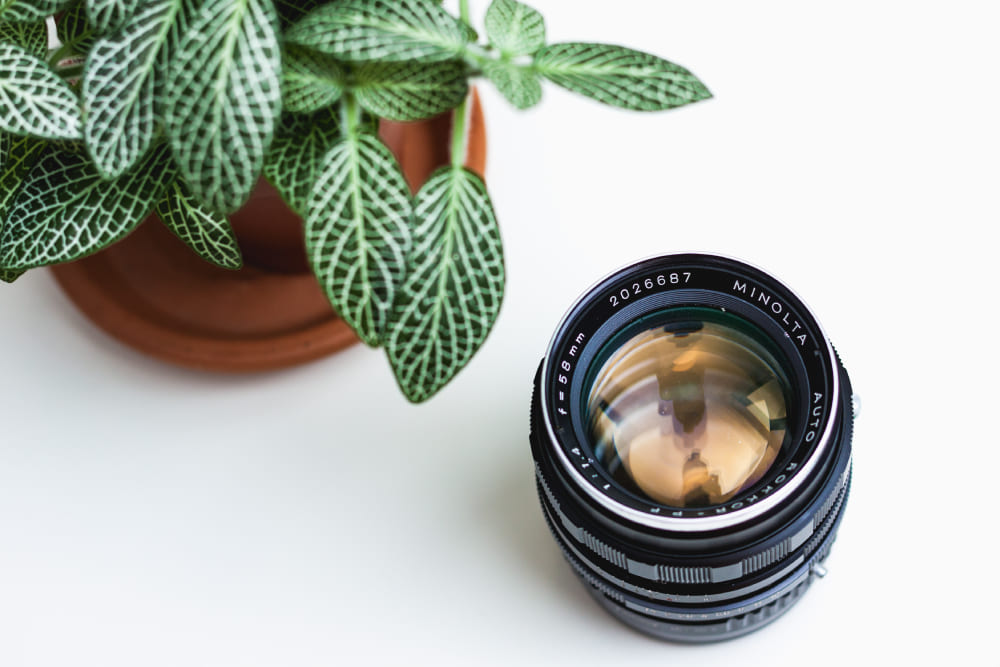
A Step-By-Step Guide to Performing a Dirt Test on a Camera Lens
If you're a photographer, you probably know how important it is to clean your camera lens regularly. Before taking photos or cleaning your lens, it's essential to test for dirt and debris on your camera lens. This will help you determine if any dust, dirt, or spots on your lens could affect your photos.
Before you start, you'll need the following items:
- A camera with a lens that you want to test.
- A plain white piece of paper or a computer with a white screen.
- A tripod (optional but recommended).
Here is a simple step-by-step guide to help you effectively complete this task:
- Preparation: Set your camera to manual mode. This mode allows you to control the settings of your camera manually, which is crucial for this test.
- Choose an Aperture: Set your aperture to the highest f-number possible (usually f/22 or f/32). This will create a narrow depth of field, making it easier to see any dirt or dust on your lens.
- Set Up Your Background: Place the white paper in a well-lit area, or if you're using a computer, set the screen to display a blank white image. Position your camera so that the lens is facing the white background.
- Manual Focus: Set your camera's focus to manual and adjust it so that the image is completely out of focus. The goal is to create a blurry image, where any particles on your lens will be obvious.
- Capture the Image: Take a photo of the white background. If you have a tripod, use it to keep your camera steady. You want the camera to remain still to ensure any spots on the image are from the lens and not from camera movement.
- Review the Image: Once you've taken your photograph, review it on your camera's LCD screen or on your computer. Any specks or blotches you see are likely dust or dirt on your lens.
Keep in mind that this test isn't perfect. Some specks may be on your camera's sensor rather than the lens. Therefore, if you still notice dust or spots after cleaning your lens, you might need to clean your camera's sensor or have a professional do it for you.
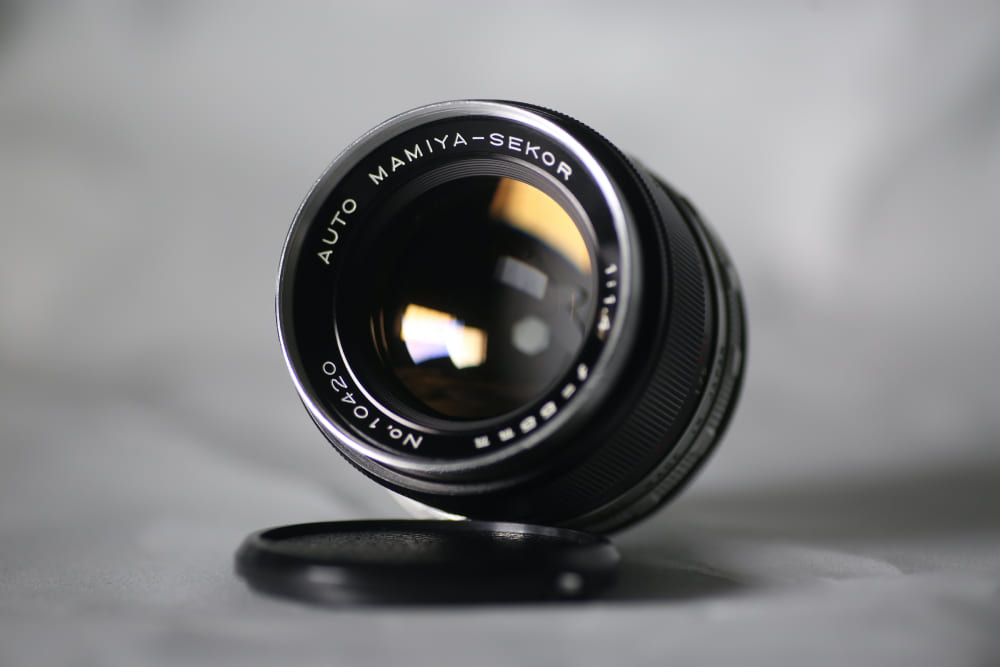
How To Clean Camera Lens?
You can follow these simple step-by-step instructions to clean your camera lens and keep it in good condition.
Materials Needed:
- Your Camera
- The Lens in Question
- A Bright Light Source (like a flashlight)
- Air Blower
- Lens Cleaning Pen
- Microfiber Cleaning Cloth
- Lens Cleaning Solution
Step 1: Initial Visual Inspection
The first step to performing a dirt test on your camera lens is to visually inspect it (or a more specialized dirt test we mentioned above).
Hold up the lens against a bright light source and look through it. Check for any visible dust, smudges, or scratches. If you see any dust or dirt, proceed to the following steps.
Step 2: Use an Air Blower
Before using an air blower on your camera lens, blow it a few times in the air to remove any dust that might be inside it. This will help prevent further contamination of the lens.
Next, gently blow off any loose dust or dirt on the lens. Remember, the goal here is to remove as much dirt as possible without touching the lens.

Step 3: Use a Lens Cleaning Pen
A professional lens cleaning pen with a carbon tip on one end and a soft-bristle brush on the other is an excellent tool for dealing with oily smudges and spots on your camera lens.
Use the soft-bristle brush on the lens pen to gently brush away any large particles of dust that the air blower cannot remove.
Be sure to tap the brush against your hand after each use to remove any loose dust, and avoid repeatedly brushing the same area. Keep brushing until all the large particles of dust are removed, and then use the air blower to blow away any remaining dust.
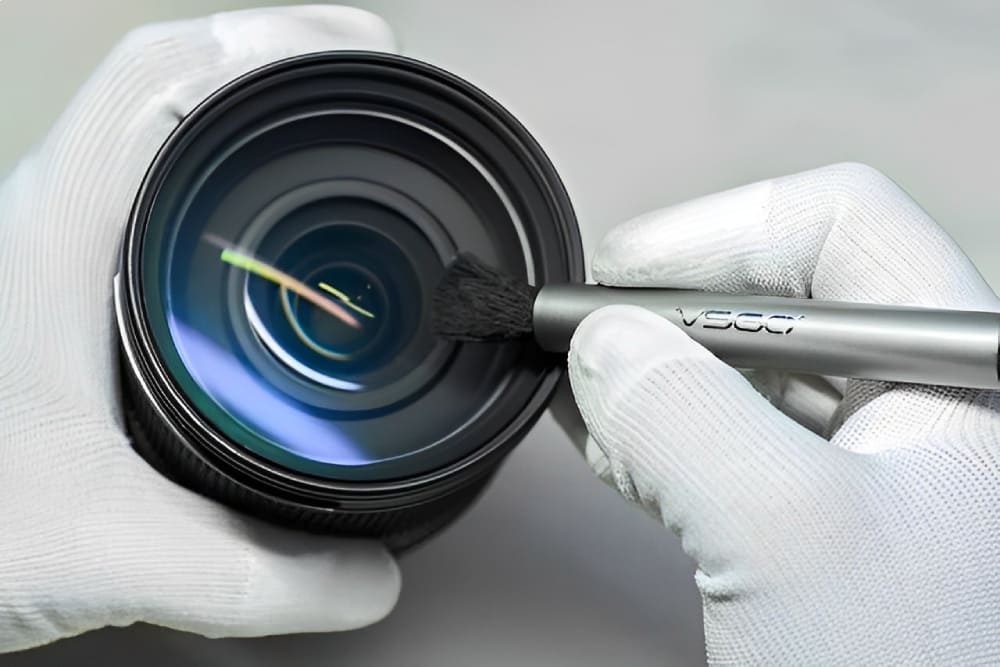
Press the carbon tip of the lens cleaning pen flat against the soiled area and use a circular motion to remove any oily smudges or spots. Once all the oil and dirt are removed, use the air blower to blow away any remaining dust particles.
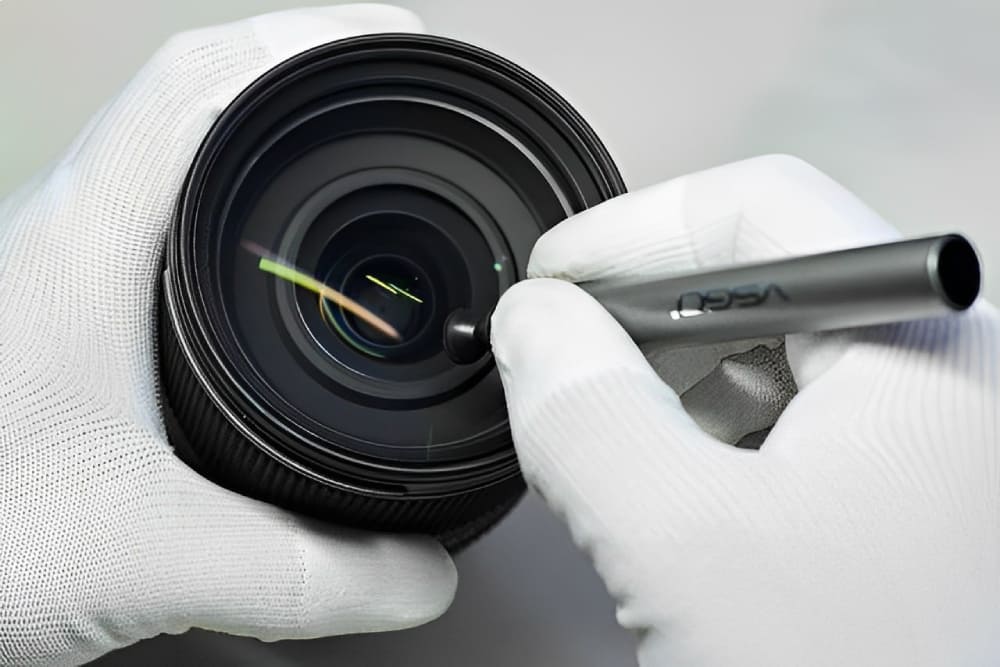
Step 4: Use a Microfiber Cloth
Take your microfiber cleaning cloth and gently wipe away any remaining dirt or smudges. Always wipe in a circular motion from the center of the lens outward.

Step 5: Use a Cleaning Solution (If Needed)
If the dirt still remains, dampen a small corner of the microfiber cloth with a lens-cleaning solution. Make sure to not over-saturate the cloth. Gently wipe the lens in a circular motion as before.
Once you have wiped away the solution, hold the lens up to the light one last time for a final inspection. If you've followed the steps correctly, your lens should now be free of dirt and dust, and ready for your next photoshoot!
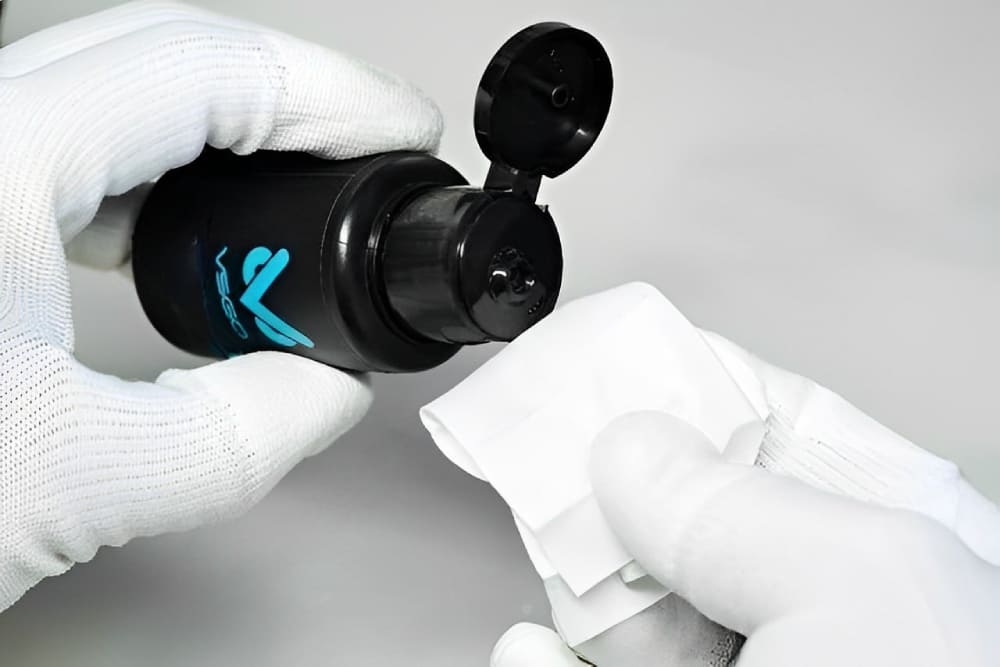
Frequently Asked Questions About Cleaning Camera Lens
Still have questions about cleaning your camera lens? Check out these frequently asked questions for more information and tips.
1. How to Keep Your Camera Lens Clean?
- Use a lens cap to protect your lens when it's not in use.
- Use a soft-bristled brush or air blower to remove loose dust and debris.
- Use a lens cleaning solution and microfiber cloth to gently clean the lens surface.
- Avoid touching the lens surface with your fingers, and clean your hands before handling the camera.
- Store your camera in a clean, dry place to prevent dust and debris from settling on the lens.
- It's highly recommended to equip your camera lens with a UV filter, which is much cheaper than a camera lens and easy to maintain. Moreover, it provides excellent sealing protection for the camera lens.
2. How Often Should You Clean the Camera Lens?
The frequency of cleaning your camera lens depends on how often you use it and the environment in which you use it. If you use your camera frequently in dusty or dirty environments, you may need to clean your lens more often.
As a general rule, it's a good idea to clean your camera lens at least once a month, even if you don't use it frequently.
It's important to note that you don't need to clean your camera lens every time it gets a little dirty. If there are only a few small specks of dust or oil spots on the lens, and they are not too dense, they won't necessarily affect the image quality. However, if you're shooting against the light, the dirty spots may cause reflections and impact the image.
3. Can Rubbing Alcohol Be Used to Clean a Camera Lens?
Using rubbing alcohol to clean your camera lens is not recommended. Rubbing alcohol may damage the lens coating, which can affect the image quality. Instead, use a lens cleaning solution and microfiber cloth specifically designed for camera lenses.
4. How to Improve Post-Processing Efficiency?
As a photographer, post-processing is an essential part of your workflow. However, the process can be time-consuming and tedious. To speed up your post-processing work and enhance your efficiency, consider using TourBox.
TourBox is a compact and versatile controller that can be used with a variety of photo editing software. It features multiple buttons, dials, and a jog wheel, which can be customized to perform various functions, such as adjusting exposure, contrast, and saturation, or navigating through menus.

With TourBox, you can perform complex editing tasks quickly and easily, without having to switch between different tools or use keyboard shortcuts. This not only saves you time but also reduces the risk of repetitive strain injury caused by prolonged mouse and keyboard use.
This guide is intended for basic about how to clean camera lenses. If your lens has deep scratches, mold, or other serious issues, it would be best to consult a professional for repair or consider replacing the lens.
Remember, always handle your camera equipment with care. Regular maintenance can extend the life of your gear and improve the quality of your photos. Happy shooting!